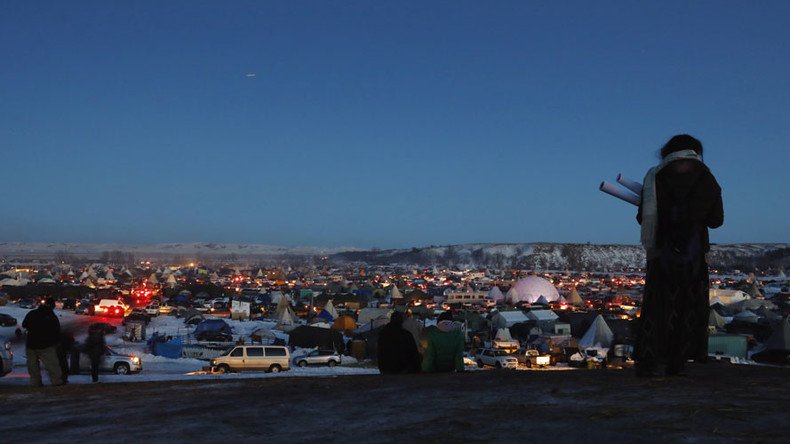Trump signs orders advancing Keystone XL and Dakota Access pipelines

President Donald Trump ordered the removal of obstacles to the construction of two major oil and gas pipelines, which the Obama administration had reluctantly blocked after protests from environmentalists and Native Americans.
The construction will be “subject to terms and conditions to be negotiated by us,” Trump said, citing as an example the need for pipe components to be built in the US.
Other presidential actions signed on Tuesday included expediting environmental reviews for critical infrastructure projects and streamlining the “extremely cumbersome” regulatory process for domestic manufacturing.
“The regulatory process in this country has become a tangled-up mess,” Trump said.
Tuesday’s actions weren’t technically executive orders but presidential memoranda, an executive action ranked just below but with equal force. Unlike an executive order, a presidential memorandum does not have to be numbered, include a cost estimate, or cite the authority under which it is issued.
White House spokesman Sean Spicer reminded reporters on Tuesday that the Dakota Access Pipeline is 93 percent complete. Trump intends to sit down with all the parties involved with the pipeline, including Native Americans, and negotiate the best deal that benefits everyone, Spicer said.
The new administration wanted to start on the Keystone XL approval process "as soon as possible," Spicer said.
Trump’s decision was quickly condemned by environmentalists, Native American activists, the American Civil Liberties Union and a number of Democratic lawmakers. Senator Bernie Sanders (I-Vermont) said the US “can't afford to build new pipelines that lock us into burning more fossil fuels” and vowed to do everything to stop both pipelines.
A lawyer for the Standing Rock Sioux Tribe said the decision was made “hastily and irresponsibly.” The tribe said it intended to pursue legal action against Trump’s order, adding that the pipeline posed a risk not just for their water supply but also for millions of Americans living downstream.
One of the leading organizations in the Standing Rock protests, the Indigenous Environmental Network, called Trump’s actions “insane and extreme, and nothing short of attacks on our ancestral homelands.”
“Trump is portraying his true self by joining forces with the darkness of the Black Snake pipelines crossing across the culturally and environmentally rich landscape of the prairie lands of America,” the IEN said in a statement.
The North Dakota Petroleum Council, representing the state’s oil producers, hailed the presidential action as “a great step forward for energy security in America,” the organization’s president Ron Ness told Reuters.
Keystone XL is a shortcut proposed for the existing system that carries oil and gas from Alberta’s shale fields in Canada to Steele City, Nebraska. The segment would have run through Montana, South Dakota and Nebraska. Despite being initially in favor of the pipeline, the Obama administration rejected it in November 2015, citing its “overinflated role in [US] political discourse.”
Obama likewise blocked the final stretch of the Dakota Access (DAPL) pipeline in December, after US military veterans joined Native Americans protesting the construction under Lake Oahe, the principal water source for the Standing Rock Sioux Tribe in North Dakota. Most of the 1,172-mile-long pipeline from North Dakota’s Bakken shale fields to Illinois has already been completed.
Asked about #DakotaAccessPipeline & #Keystone, Spicer says #Trump's focus is jobs, the economy & using US resources https://t.co/m96ivKU6bRpic.twitter.com/10MSqpx5YL
— RT America (@RT_America) January 23, 2017
Both Trump and his nominee for Energy Secretary Rick Perry held shares in Energy Transfer Partners, the company building DAPL, but have since divested of them, according to their attorneys.
Following media reports that Trump would revive the pipeline projects, shares of TransCanada, Energy Transfer Partners LP and Energy Transfer Equity LP went up 1.1 percent, 3.3 percent and 1.7 percent respectively, Bloomberg noted.












